Over the years, a small number of specimens said to represent an undescribed species of fairy wrasse have found their way into the aquarium trade, apparently having originated from collectors based in Sulawesi, Indonesia. This confounding fish, dubbed the “Sailfin Fairy Wrasse” by Scott Michael, is clearly related to the neighboring C. rubripinnis and C. tonozukai, but it has never been clear if these similarities were due to it being a rare hybrid or if it was genuinely an unrecognized species endemic to the waters between Borneo and Sulawesi. Now, with the recent discovery of ten specimens from the Philippines, it seems increasingly likely that this fish is a real species, restricted to portions of the Coral Triangle that see relatively little collection and exploration.
- C. tonozukai, from Lembeh. Credit: Itaru Takaku
- C. rubripinnis, from Cebu. Credit: ラーメン談義
- C. filamentosus, from Bali. Credit: Kazu
- Sailfin Fairy Wrasse, from Sarangani, Philippines. Credit: Barnett Shutman
- Sailfin Fairy Wrasse, from Bali. Credit: kazu
The most noteworthy traits for diagnosing this fish are the prominent stripe along the sides, which serves to divide the red back from the white belly, as well as the thick black posterior margin of the caudal fin seen in most specimens. Neither of these are found in C. rubripinnis—a species which appears to be restricted to the Philippines—or C. tonozukai, which occurs further east in Indonesia and Palau. In general appearance, the Sailfin Fairy Wrasse looks quite like C. rubripinnis, and it would seem that most authors (e.g. Kuiter 2010, Allen & Erdmann 2012) have treated the two as a single species. But the presence of a distinct marking in the dorsal fin is something not seen in the Philippines population and is clearly more in keeping with the patterning of C. tonozukai, though the obvious differences in the coloration of the body and dorsal fin shape keep us from identifying our mystery fish as that species.
The precise biogeographic range of the Sailfin Fairy Wrasse remains to be determined, though it appears to be restricted to the southern reefs of Mindanao, through the Makassar Strait separating Borneo from Sulawesi and south to Bali, where it is apparently quite uncommon. The map shown above gives a rough idea of where these species have been reported from, but the precise boundaries of their ranges are still highly uncertain. To date, it has been reliably recorded from Zamboanga and Sarangani in the Southern Philippines (both aquarium collections by RVS Fishworld), Sipadan, Mabul and Derawan off the northeastern coast of Borneo (diver photographs), from an indeterminate location in the southwest of Sulawesi (earlier aquarium specimens) and possibly elsewhere in the northern portions, and from diver photography in Bali, where a suspected hybrid with C. filamentosus has also been observed.
- From Derawan, Indonesia. Credit: diver hiro
- From Derawan, Indonesia. Credit: diver hiro
- From Derawan, Indonesia. Credit: diver hiro
- From Derawan, Indonesia. Credit: diver hiro
With so many examples of this fish now known, it seems quite certain that the Sailfin Fairy Wrasse is not just some weird, rare hybrid, but, rather, a legitimate species in need of scientific description This raises some interesting biogeographical questions, as its unusually restricted range to the north and west of Sulawesi is not something we see in other wrasses (or any other fish that I can think of). What could have caused this one fish to speciate here, but not others? Are there other unrecognized species found in this region which have similarly gone unnoticed? Hopefully, by determining the origins of this enigmatic wrasse we might begin to better understand the forces governing the immense biodiversity of the Coral Triangle and how best to classify the many species found there.
- From Zomboanga, Philippines. Credit: Barnett Shutman / RVS Fishworld
- From Zomboanga, Philippines. Credit: Barnett Shutman / RVS Fishworld
- From Zomboanga, Philippines. Credit: Barnett Shutman / RVS Fishworld
Originally published on June 28, 2016


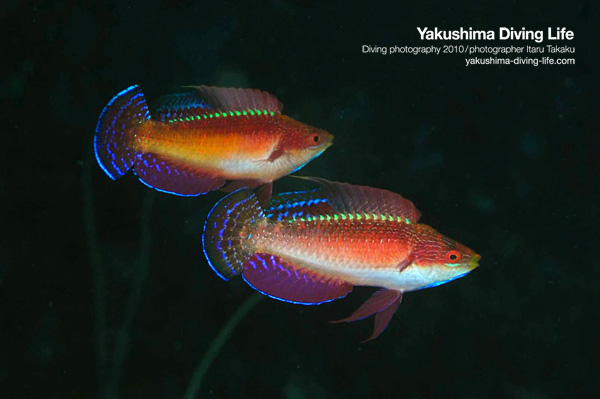
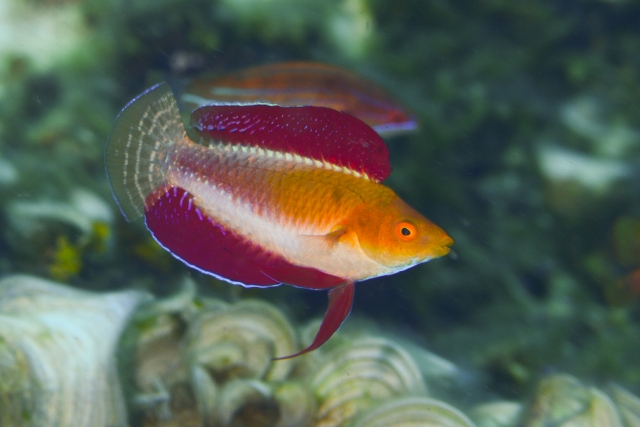

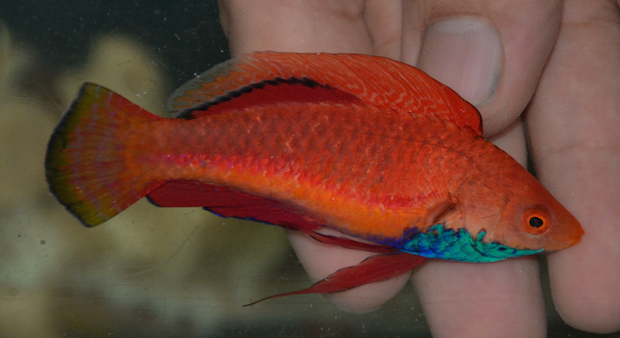
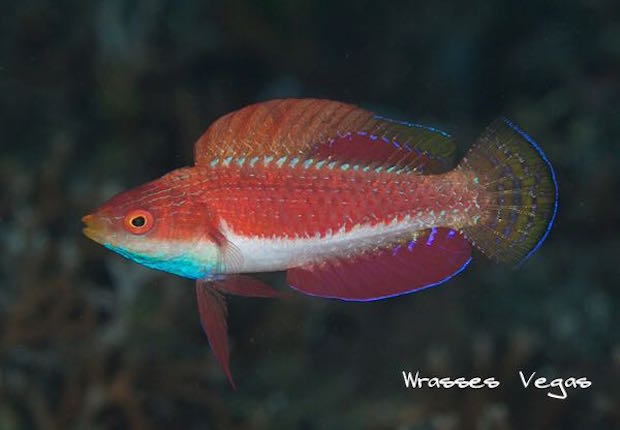

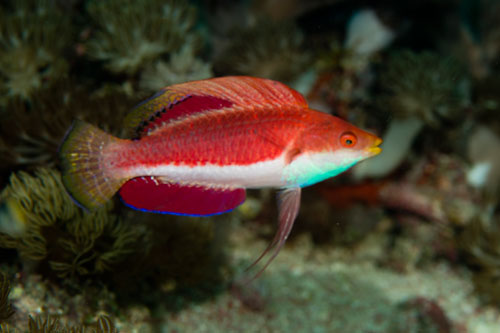
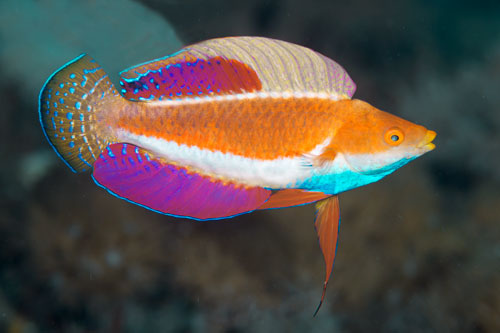
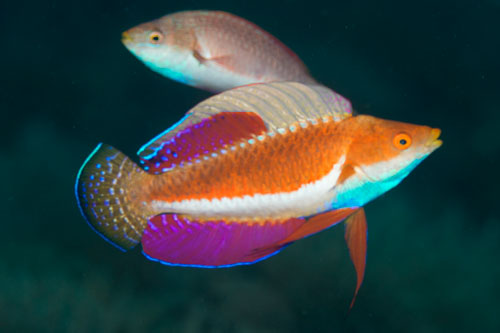
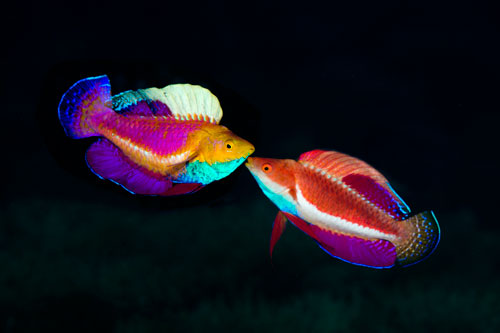


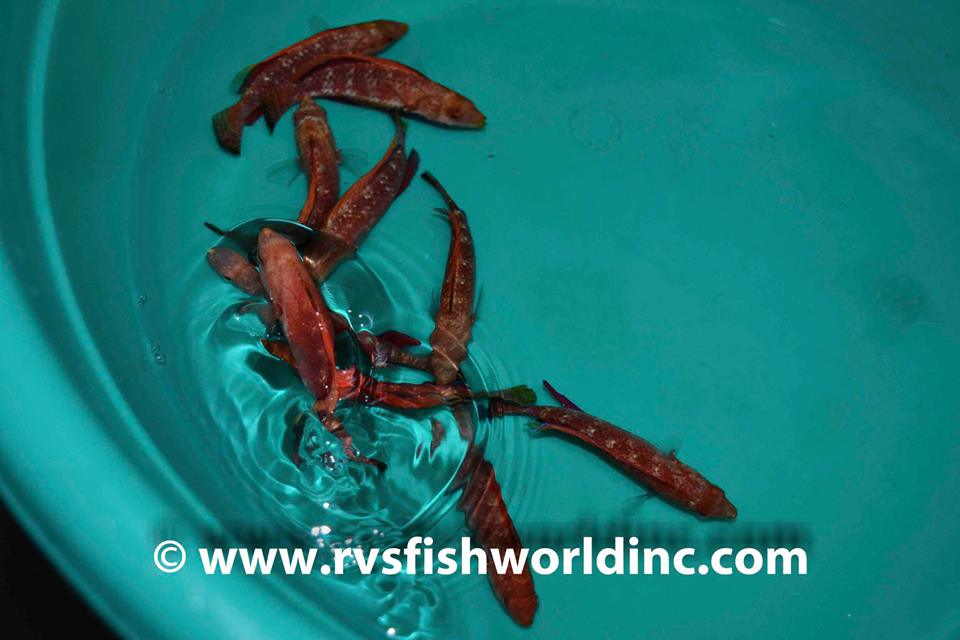









0 Comments